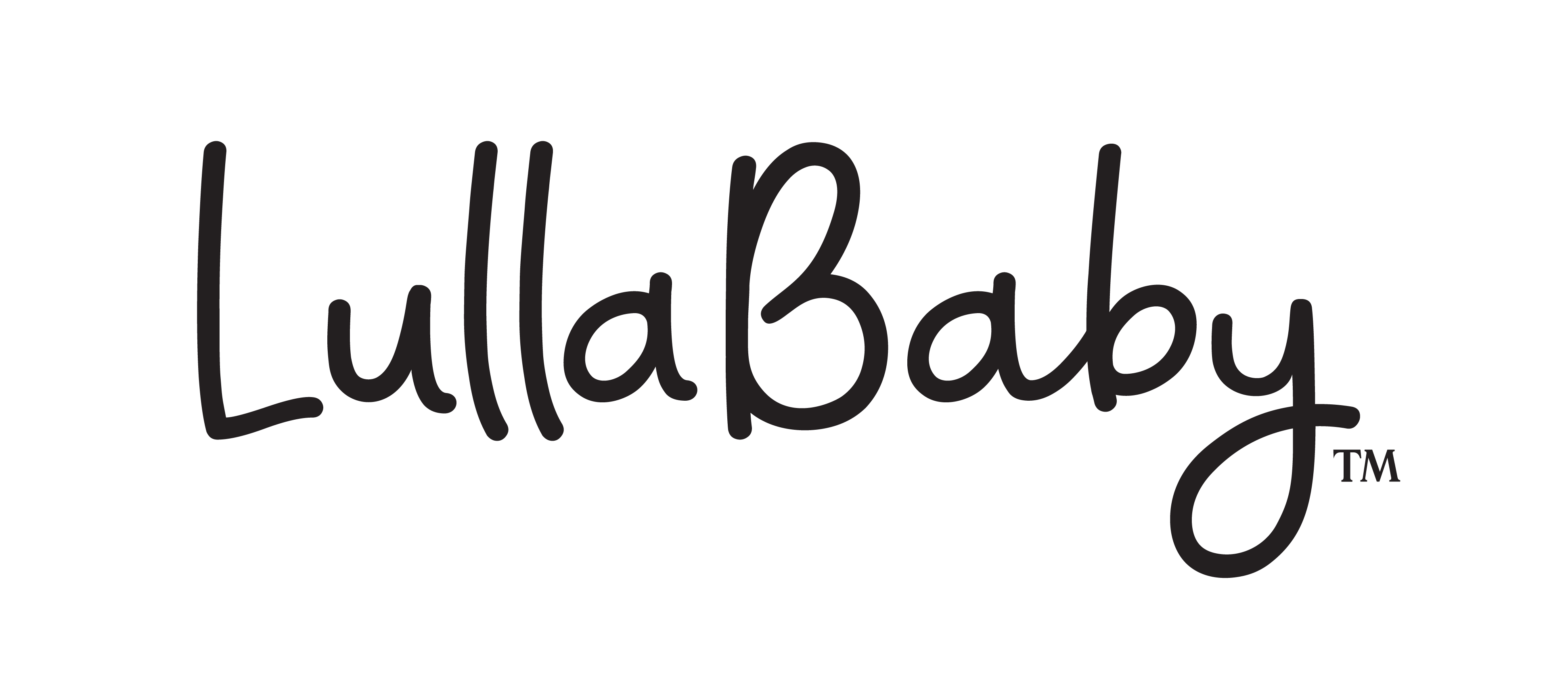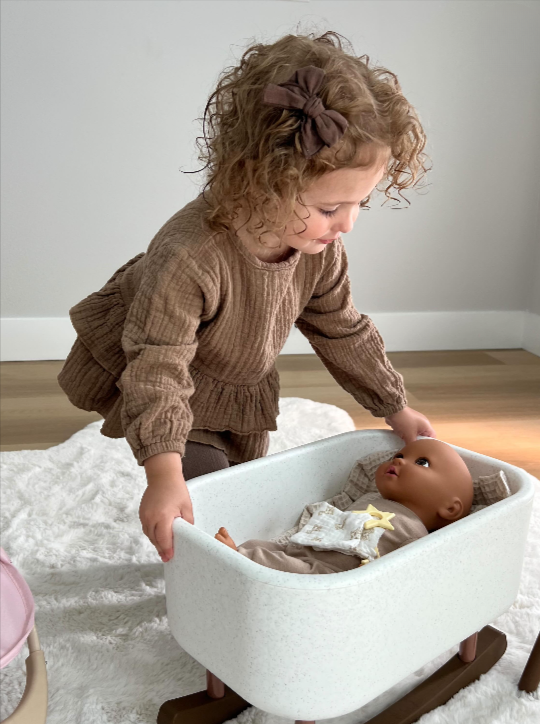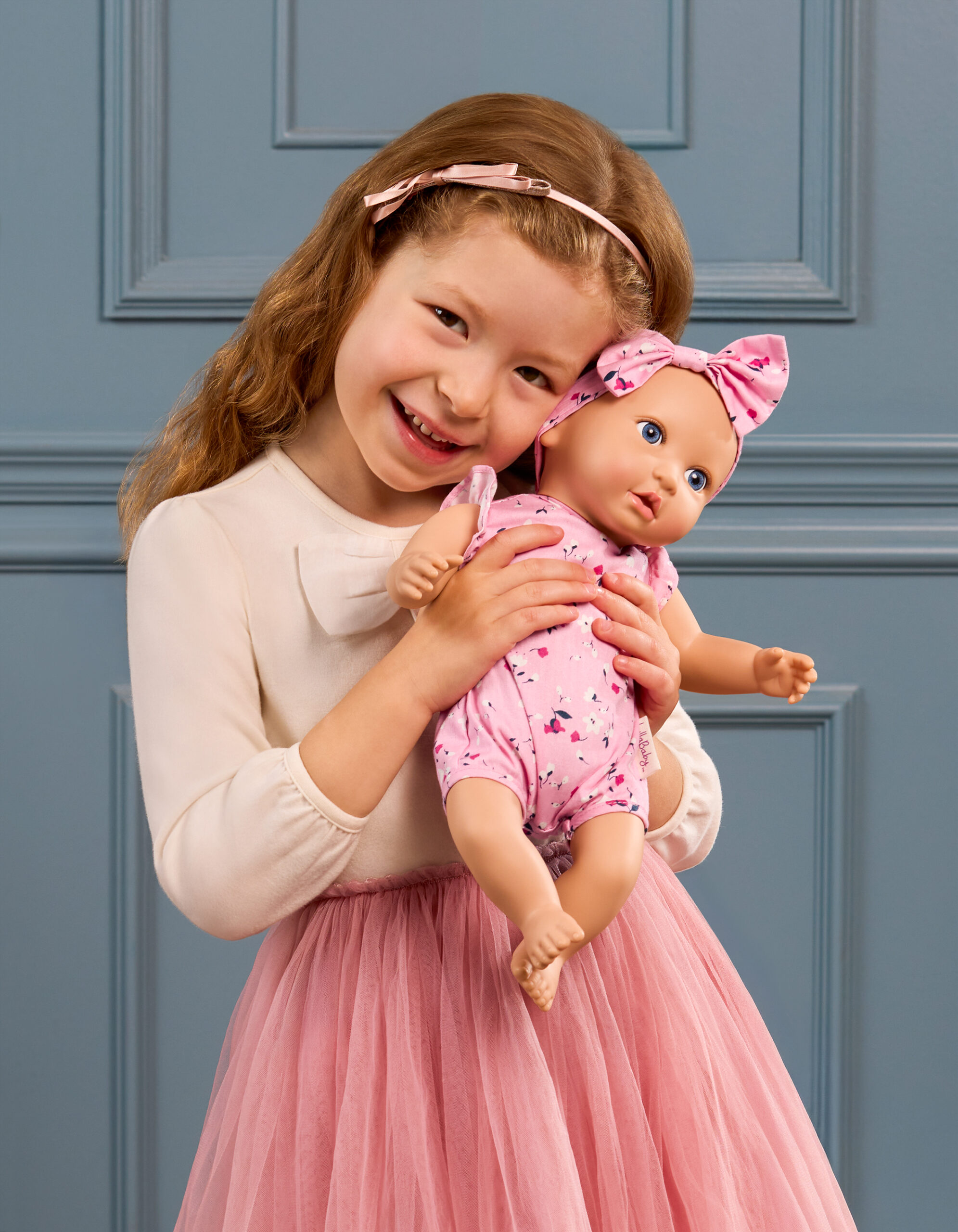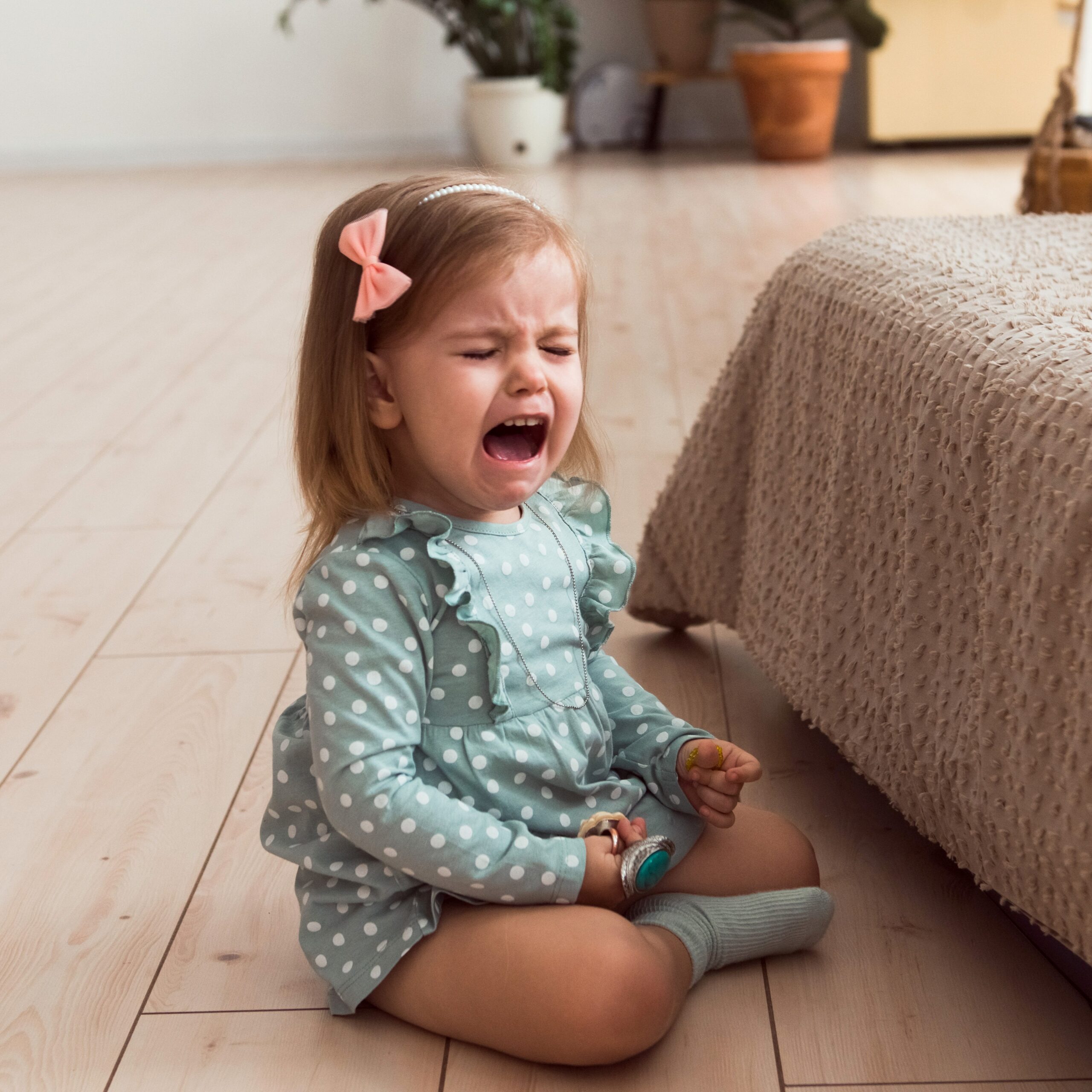
Managing Big Feelings & Toddler Tantrums
Watching your baby grow into a toddler can be bittersweet. While your little one grows and experiences new feelings and ideas, parents do the same. Just when you got used to caring for a baby, it’s time to tackle big feelings, big changes, and big kids.
If you need help supporting and validating your toddler’s emotions as they transition to daycare, preschool, or kindergarten, here are some suggestions to help de-escalate tantrums and give them the confidence to do hard things—like start this new, exciting chapter of their little life.

Toddler Tantrums Explained
You’ve been the center of your child’s world for their whole life. Then, one day, you drop them off somewhere new, with people they don’t recognize. It’s scary. You no longer have sole control over how your child grows up. Once they enter daycare or school, they get to experience new things and become their own person outside of your influence. It’s an exercise in letting go as a parent, and in independence for your child.
During the transition, it’s very common for little ones to cry, throw tantrums, or get aggressive. None of this is on you or your child. With big changes come big feelings. It’s normal. It’s to be expected. When they act out, it’s their way of asking for attention.
Remember that no matter what your child does in moments of stress, they are not bad. Children are inherently good and kind. Take a breath. Regulate your emotions to help your child regulate theirs. Give yourself extra grace and love when your child acts up. Here are some ways you can help your child manage those big feelings.
Toddler Drop-Off Tips
It’s easy to want to take all the pictures and cry all those bittersweet tears. If you let yourself get swallowed up by those emotions, it can make things tougher for your kiddo. They’re little sponges. If you’re anxious, so are they. If you’re excited, they’ll be as well.
Don’t linger at drop-off. Say goodbye with a smile. Give them a kiss and remind them that you’ll be back soon. Maybe even leave them with a small keepsake toy (like the teether accessory from the Care & Feeding Set, High Chair Set, or Playpen Set). Tuck it away in their backpack before their first day and tell them it’s there to remind them how much you love them.
It’ll be hard at first, especially if they start to melt down. But you have to hand them off to their new educator, regardless of how your heart breaks for them.
Childcare professionals are no strangers to toddler tears. If they kick, scream, or cry in your arms at drop-off, reassure them, give them a few more kisses and hugs, remind them of their memento and how much you love them, then let them go.
They will stop crying. They will build a connection with their new caregiver and the others in their class, and it will get easier day by day.
Until it does, here are some more suggestions to manage big feelings.
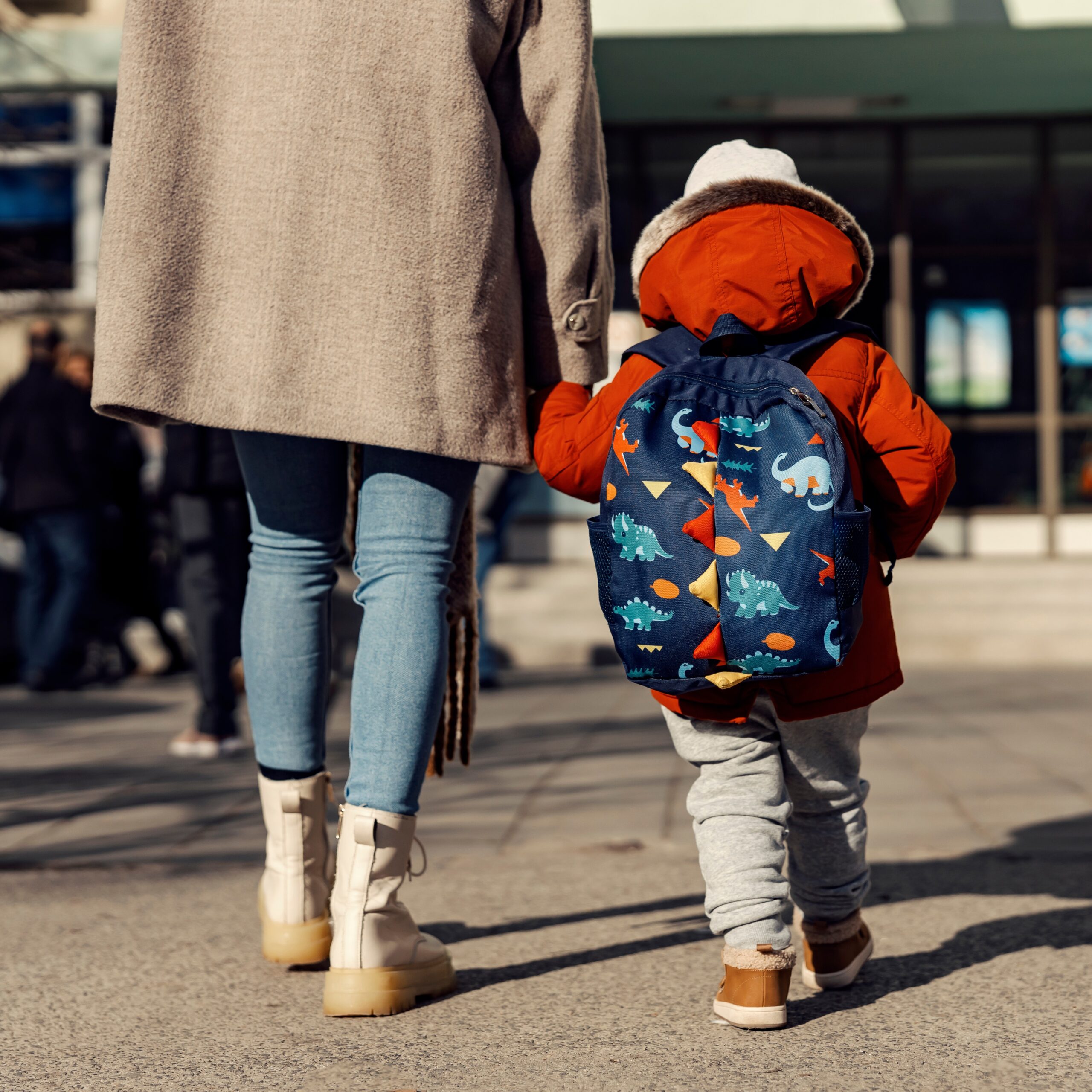
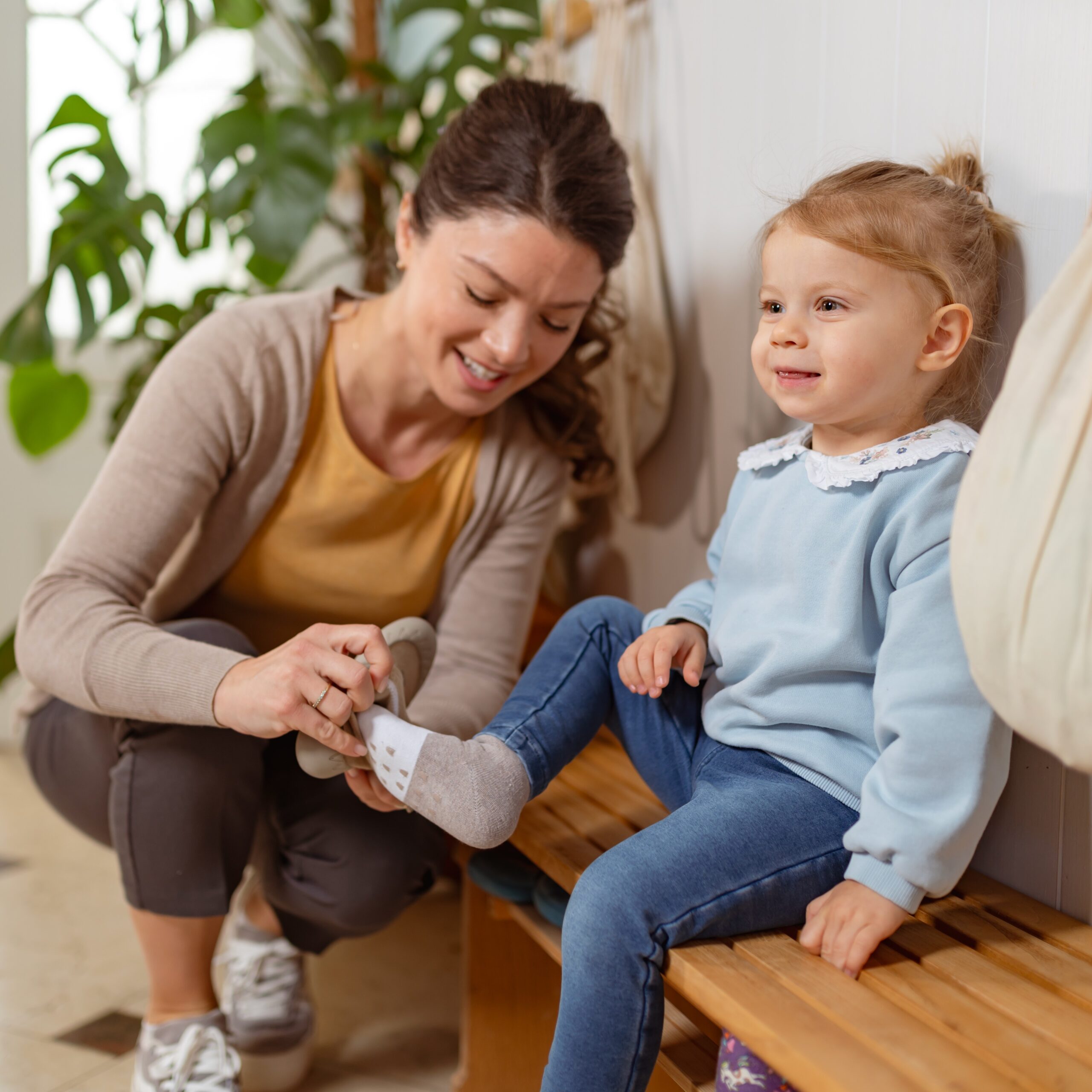
Accept & Acknowledge Big Feelings
Tantrums don’t always make sense. Your child might be adjusting well, and then one morning they throw all their socks across the room because they can’t find the pair they want. You’re already late. Your patience is thin. You want to grab any pair of socks, put them on your toddler’s feet, and rush out the door.
But that will only make it harder.
Be calm, model the behavior you want to see, and say something like, “The socks you want are in the wash and that makes you mad. It’s okay to feel mad, but it’s not okay to throw things. Let’s pick out a clean pair of socks together and put the others away.”
Once you accept and validate your toddler’s feelings, their tantrum becomes a little easier to manage. When you name and identify what they’re feeling, they learn the skills to do it themselves. The more they understand their emotions and limits the less chaos you have to deal with.
Tools to Help Toddlers Cope
When your little one is at daycare or school, you can’t talk them down from a tantrum. Their caregiver or teacher has over a dozen other children to care for and might not be able to give them the attention they crave. It’s important to prepare for transitions with coping mechanisms.
- Create structured routines. Our blog on responsibility includes a morning routine checklist to start the day strong, and our bedtime cooperation blog has a bedtime routine that can help them get a better night’s sleep.
- Praise them for everything they do right. Positive reinforcement works ten times better than punishments ever will. When they act out for attention and get punished instead, there’s a good chance they’ll act up again. If you praise them for doing something well, they’ll likely do it again.
- Identify their triggers. It can be difficult if your child has tantrums when you’re not around, but communicating with their educator and trying to understand the big picture can help. If your child is acting up at home, that’s normal too. When a child re-enters their safe space, they often release all the emotions they’ve been holding in all day. That can manifest as tantrums or tears. Talk it through with your child. Maybe they need a snack, a hug, or their LullaBaby doll to feel less alone. Find what works for them through trial and error.
- Give options. Once you’ve acknowledged your child’s feelings and told them it’s okay to feel that way, give them options. If your child is upset because their sibling won’t share their LullaBaby stroller, you can give them two options: “Let your sister play with it for one more minute, or see if she wants to play with the bassinet instead.”
There’s no right way to deal with your child’s big feelings and outbursts, but as long as you keep trying, they will eventually learn to cooperate more.
Teach Toddlers Empathy
Your child imitates the way you act and react. As tough as it can be, the best way to manage your little one’s big feelings is to manage your own. That doesn’t mean you have to suppress your feelings. Instead of hiding your frustration or sadness, explain those feelings to your child: “Mommy is feeling sad because you didn’t eat the food she made for you.” Show them how their actions affect others so they can understand empathy.
A great way to contextualize this for toddlers is to teach them that hearts hurt too. If your child punches, kicks, or throws things at you, show them where it hurts physically. Then tell them it also hurts your heart. The ouchie on your arm will go away, but the one in your heart is harder to heal.
The balance between teaching and comforting is difficult to maintain. Managing big feelings and building strong communication go hand in hand. One day, you’ll be able to discuss the challenges and the highlights of the day with your child and help them develop strong emotional responses. Until then, listen, support, and model emotional awareness for your child.
This is a short stage of your child’s life. The fact that you’re taking the time to find ways to help your child transition and manage their feelings shows that you’re a great parent. Keep doing your best, and you’ll watch your child grow into a wonderful, thoughtful, and caring person.
